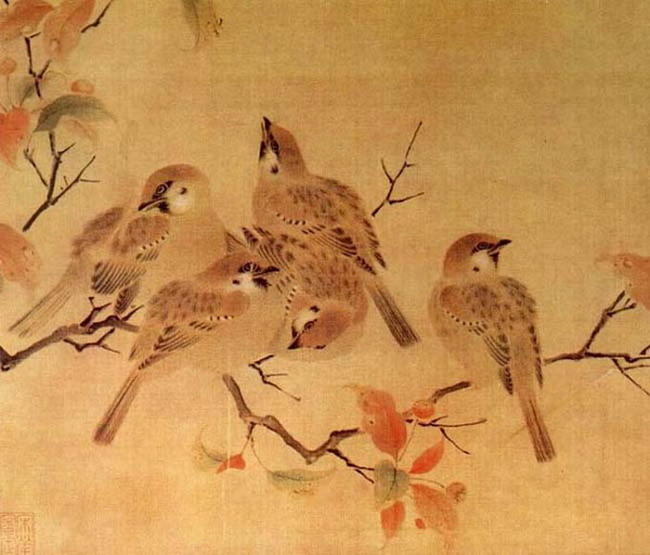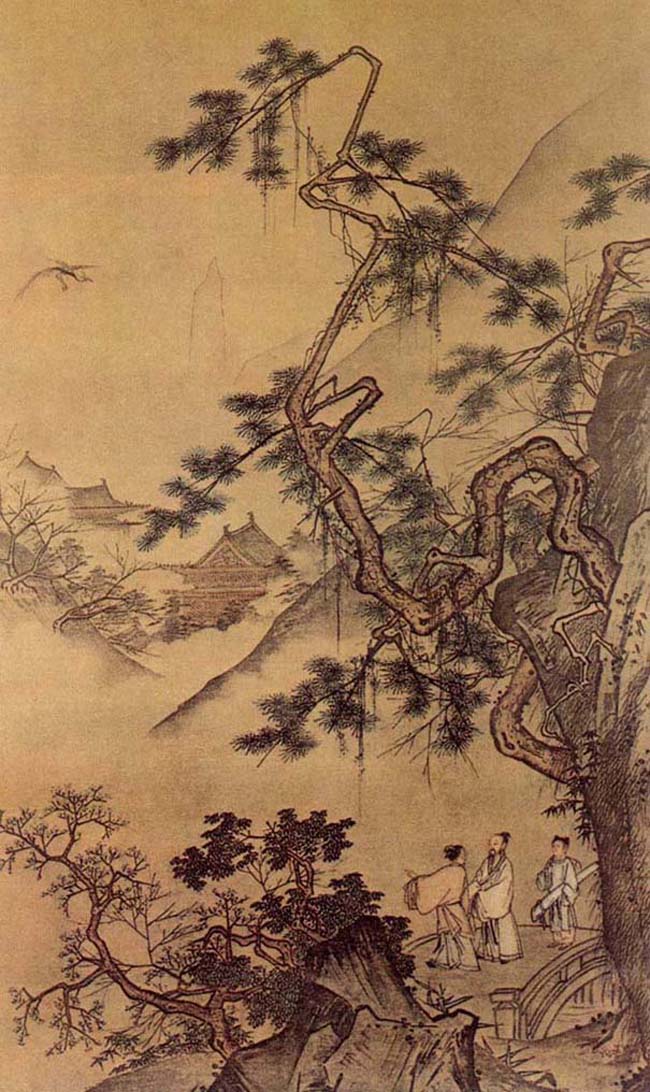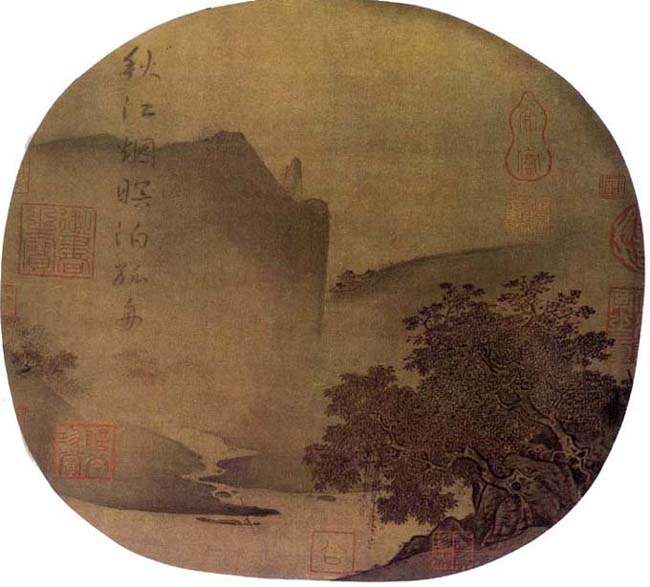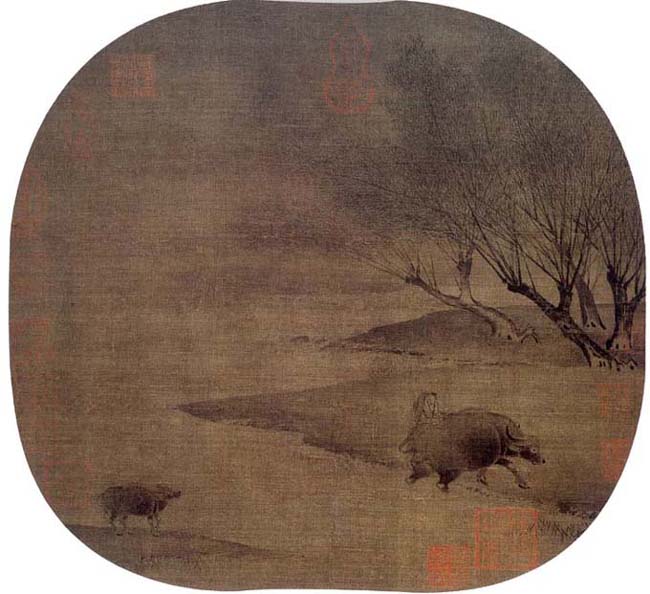1127: The Advent of the Southern Song and Artistic Renaissance
The 南宋 () dynasty was born in 1127 when the imperial court fled south after the Jurchen invasion. Settled in 临安 (, present-day Hangzhou), this period saw the flourishing of a refined court art characterized by:
- A poetic realism tinged with melancholy
- Asymmetrical and airy compositions
- A stylistic opposition to the circles of scholars
- The reinterpretation of traditional motifs

Sparrows on a fragile branch - symbolism of fragility
The Aesthetics of the Imperial Court
Unlike the monumentality of the Northern Song, the art of the Southern Song developed an intimate visual language. Official painters created works where emptiness (留白 - ) became meaningful, a technique masterfully illustrated by Ma Yuan in The Wind in the Mountain Pavilion:

The Wind in the Mountain Pavilion - work by Ma Yuan
Masters of Southern Song Painting
Two giants dominate this period:
Li Tang 李唐 ()
A pioneer of the transition between the Northern and Southern Song, his style with angular contours influenced generations. His work Landing in Autumn reveals:
- Dynamic diagonal landscapes
- Naturalism of aquatic elements
- Balance between details and economy of strokes
Ma Yuan 馬遠 ()
Nicknamed "One-Corner Ma" for his off-center compositions, he reached the quintessence of 山水画 ( - mountain-water painting). His characteristics:
- Revolutionary use of emptiness
- Poetic dialogue between nature and humanity
- Suggestiveness rather than literal description

Landing in Autumn - Li Tang

The Return of the Herdsman under the Willows
The Art of the Literati: A Counter-Culture
Parallel to official art, the literati (文人 - ) developed:
- 写意 () painting - free expression
- Primacy of the calligraphic stroke
- Personal subjects rather than courtly ones
- The ideal of 气韵生动 () - vital rhythm
Ceramic Revolution: The Poetry of the Blade
Imperial kilns such as 官窑 () reached technical heights:
| Type | Characteristics | Innovation |
|---|---|---|
| Celadons | Cracked jade glazes | Mastered reductive firing |
| 紫口铁足 shard | Violet rim, iron foot | Control of oxidations |
| Incised decoration | Subtle poetic motifs | Evocation rather than representation |
Legacy and Influence
The art of the Southern Song laid the foundations for later Chinese aesthetics:
- Decisive influence on the Ming 浙派 () school
- Transmission of techniques to Japan (suiboku-ga style)
- Major reference for modern painters like Pan Tianshou
This troubled but fertile period crystallized the ideal of 雅 ( - refined elegance), where art became a spiritual refuge from historical tumults. To delve deeper into pictorial techniques, discover our guide on Chinese painting models.
Major Artists
- Li Tang
- Ma Yuan
- Xia Gui
- Liu Songnian
